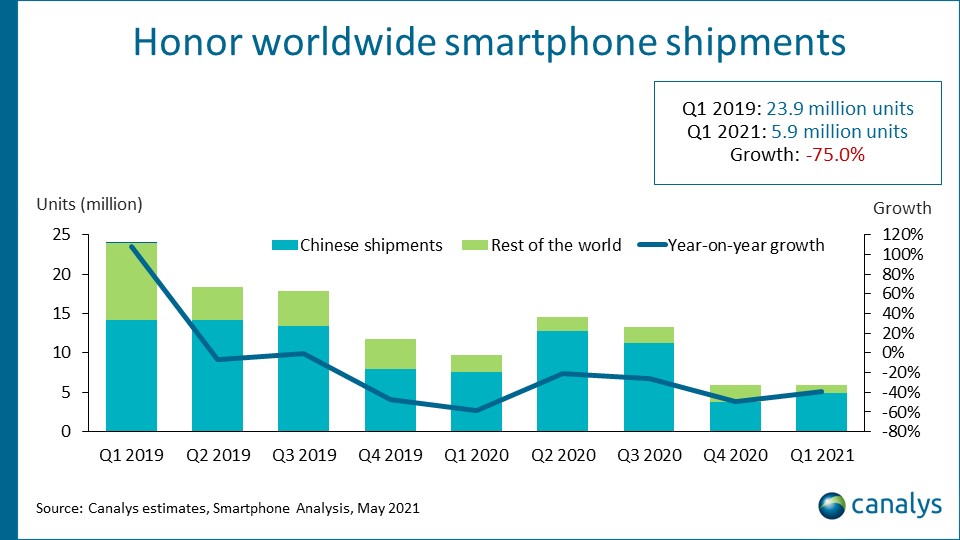
The US and Europe take aim at chip production
The West is finally paying attention to semiconductors again, but the road ahead will not be easy.
Over a year on from the onset of COVID-19, topics that were once talked about only by those in specialist fields have now gone mainstream. How many of us thought we’d ever do so much reading up on mRNA vaccines, home office ergonomics or zero-equipment living room workouts? From the perspective of our own industry, the flood of technology products into every aspect of our lives has brought even the layman’s focus onto something rarely talked about before: the humble semiconductor.
In case you’ve been living under a rock for the last six months, we’re in a serious supply desert. And in a world where seemingly every object can be “smart”, this has led to order delays and cancellations in not just the PC and smartphone industries, but also in segments like automotive and home appliances. Canalys forecasts there will be close to a 25-million-unit shortfall between demand and supply for desktop and notebook shipments this year, and some of the unfulfilled demand will be lost forever. In fact, the problem has grown so big that it can no longer be ignored by politicians in the West, which for decades has seen its share of semiconductor production slide as it ceded the role to Asia.
Both the US and Europe have recently taken the first steps beyond just talking about the issue. In early June, the Biden administration released the findings of its 100-day supply chain assessment of critical products, in which semiconductors feature next to large-capacity batteries, minerals and materials, and pharmaceuticals. The report includes a recommendation for Congress to approve at least US$50 billion in investment for domestic semiconductor manufacturing and R&D. Around the same time, 22 EU member states announced a joint declaration “to bolster Europe’s electronics and embedded systems value chain” with “particular effort to reinforce the processor and semiconductor ecosystem”. The intended level of funding is €145 billion (US$170 billion) over two to three years, derived from 20% of the Recovery and Resilience Facility, and a production facility in Dresden has already been opened.
The task ahead for the US and EU is monumental, but the moves should be seen as “better late than never”, provided both can maintain their strategic focus. Firstly, the financial commitments, both in terms of scope and timelines, must not be hamstrung as the two regions are already playing catch-up. Secondly, the efforts need to be above the normal political fray and remain in place regardless of which political parties come to power. Positioning the issue as one of national security importance and clearly outlining the benefits to citizens will be vital for both steps. And finally, while the emphasis on cutting-edge technology is eye-catching, consideration must be given to boosting output of older and more basic chips, where shortages are more severe.
A broader global base of semiconductor manufacturing would be hugely beneficial to the future stability of the tech industry, and we sincerely hope the current attention it’s getting doesn’t fade away as we move into a post-pandemic world.
Share this article
CATEGORY
- All
- Canalys Forums
- Canalys Forums,Channels
- Canalys Forums,Channels,Partner Program
- Canalys Forums,Channels,Sustainability
- Canalys Forums,Sustainability
- Enterprise
- Market
- Market,Canalys Forums,Channels
- Market,Canalys Forums,Channels,Cloud
- Market,Canalys Forums,Channels,Sustainability
- Market,Channels,PC
- Market,PC
- Market,Smartphone
- Market,Technology,AR/XR/VR
- Market,Technology,Automotive
- Market,Technology,Canalys Forums,Channels
- Market,Technology,Canalys Forums,Channels,Cloud
- Market,Technology,Channels
- Market,Technology,Channels,Cloud,Partner Program
- Market,Technology,Smart Personal Audio
- Market,Technology,Smart Speaker
- Market,Technology,Smartphone
- Smart Personal Audio
- Smartphone
- Technology
- Technology,Canalys Forums,Channels,Security
- Technology,Channels
- Technology,Channels,Cloud,Partner Program
- Technology,Channels,Partner Program
- Technology,Unified Communications
- Technology,Wearable Band

